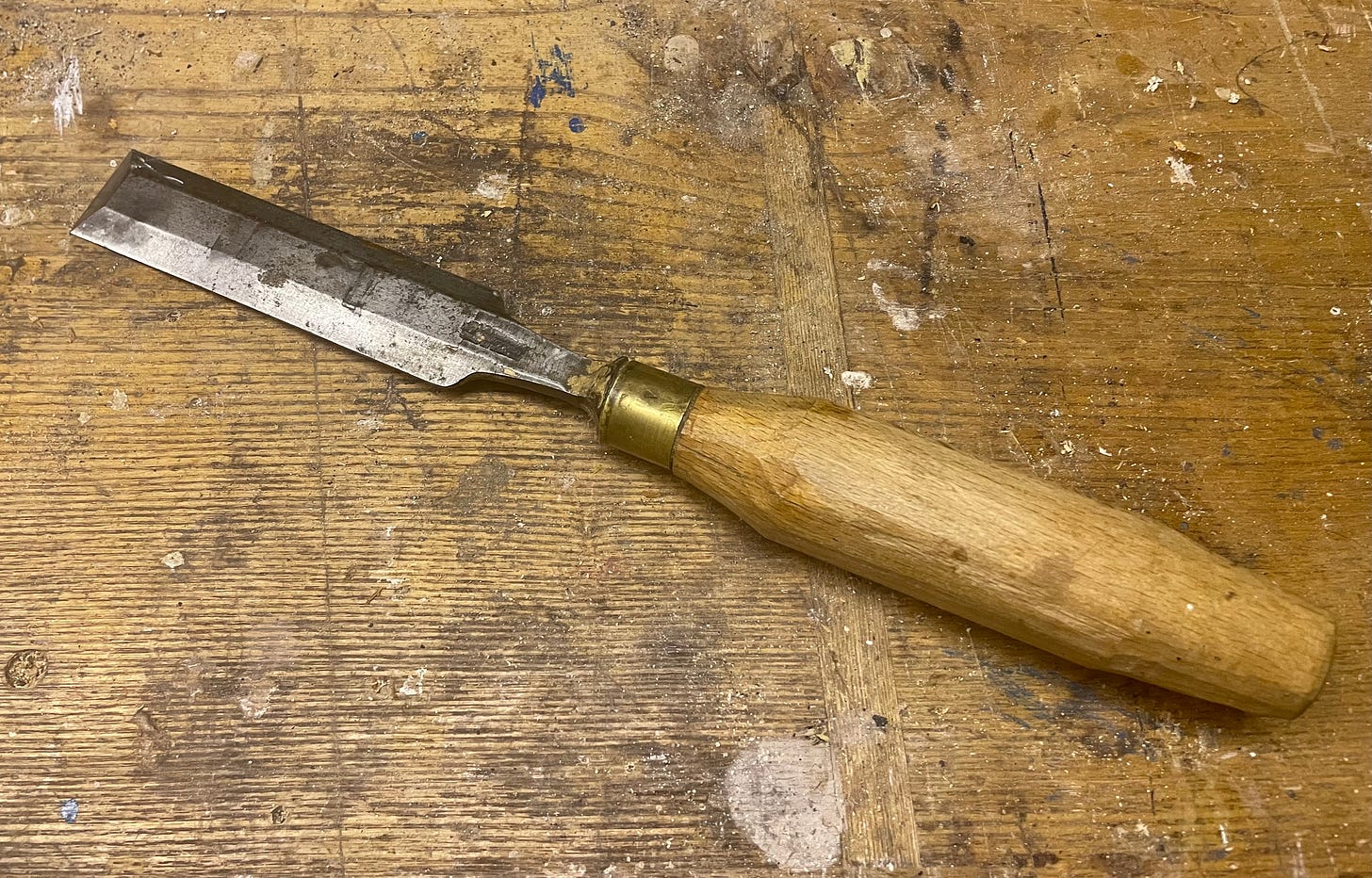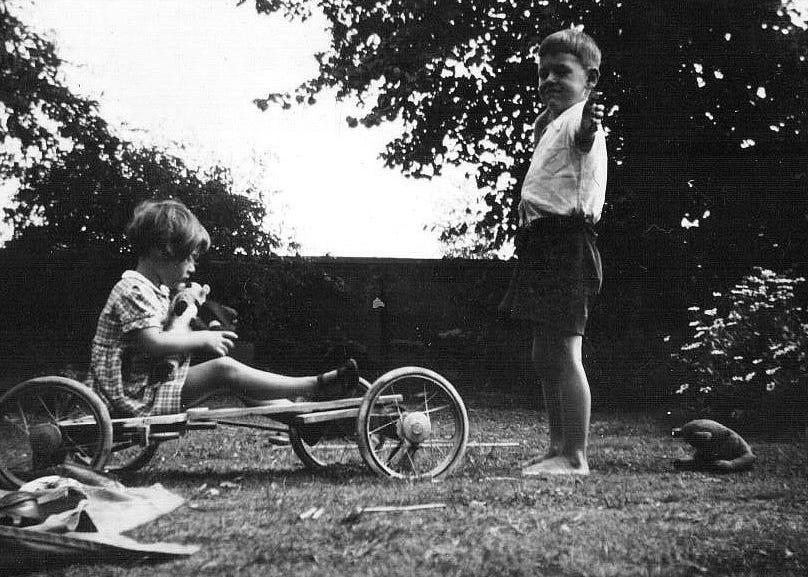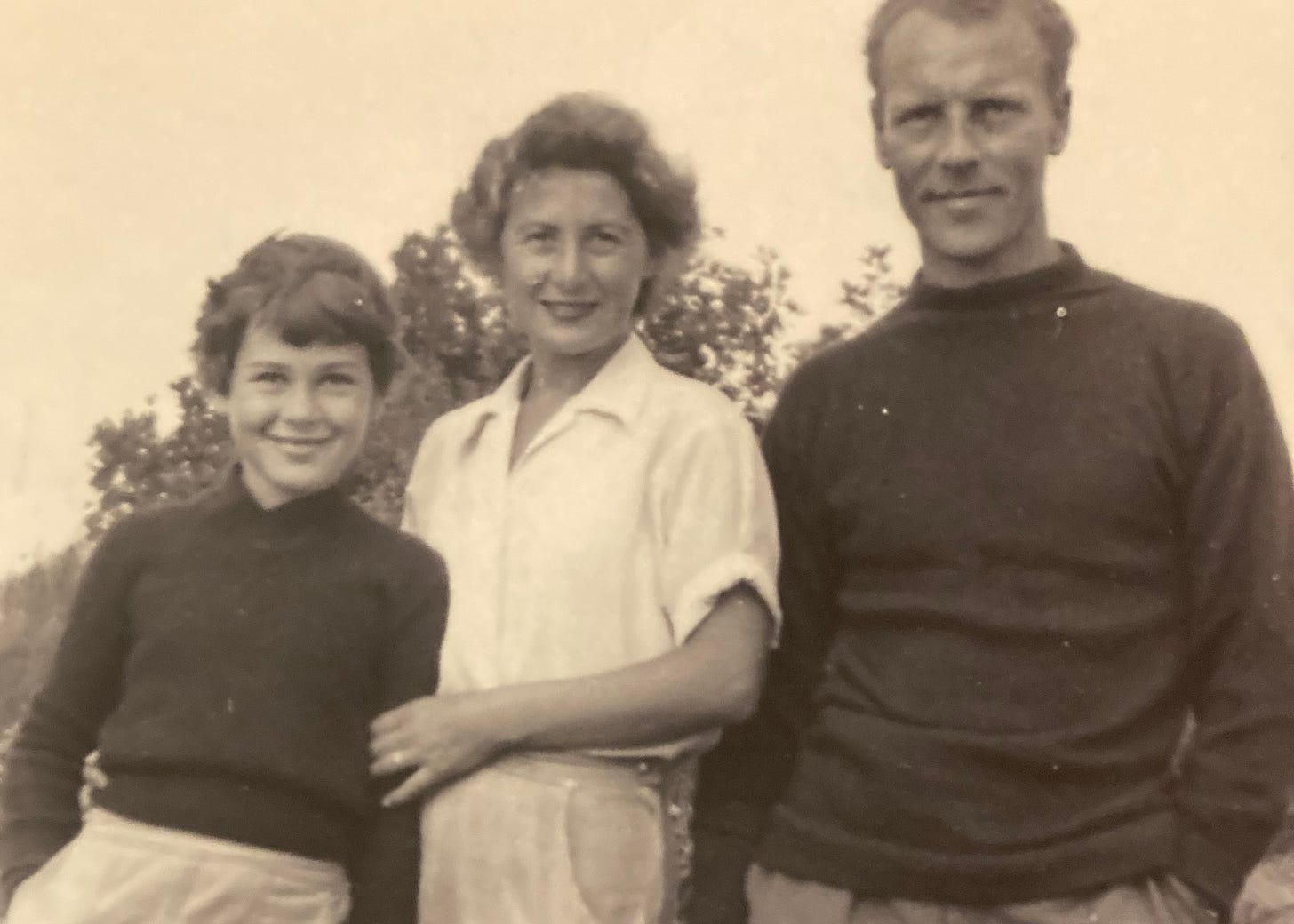I am constructing a mortice and tenon joint in a piece of timber, cutting to the scored lines with a fine saw, then removing the waste wood with a firm chisel and mallet. When I offer up the tenon to the mortice, the fit is too tight. I pick up my paring chisel and remove a few fine shavings until the two parts fit snuggly.
I came across this chisel when Bill, our longstanding family friend, died, and I was asked to look through his DIY cupboard. Among the collections of mixed screws and the half-used tubes of glue were several useful tools, including an electric jigsaw and a ratchet screwdriver that I use to this day. But the gem of the collection was lying at the back of the cupboard, a bit grubby and with no handle. At once I recognised it as a vintage quality tool forged of traditional steel, designed for a professional. I took it home eagerly, shaped a handle from a piece of straight-grained ash, re-ground the bevel and finally gave it a sharp edge on a fine whetstone and leather strop. Now it sits proudly in the tool rack, putting to shame my cheap and cheerful modern chisels, with their plastic handles and chunky, chromium-steel blades.
Each time I use this chisel, it evokes a long stream of memories.
At the end of the Second World War, when my father was away with the armed forces in India and I was still a baby, my mother bought 19 Routh Road on Wandsworth Common, a large Victorian family house with two big reception rooms and six bedrooms. I believe she paid £500.00. Once the war damage had been repaired, the family moved up the road from my grandmother’s house, where we had spent much of the war. My earliest memory there is of meeting the little girl next door: we shyly made friends over the fence between our gardens: “There’s the little boy again,” I heard Lesley say to her mother. “His name’s Peter,” Wendy told her. Wendy and Bill Garner, with their daughter Lesley (almost exactly a year younger than me) had just moved into the rented flat next door. Soon the two families became friends, despite the differences in age and background. Wendy and my mother would call ‘Coo-ee’ to each other over the fence, share household tips and cake recipes; Lesley and I played together most days.
But the Garners didn’t stay in Routh Road for more than a few years, for they had lives to establish together. They moved to a flat in central London near Hyde Park, then to Surrey. However, the families stayed in touch, we probably liked each other for our differences as well as similarities. We even went on family holidays together to Cornwall and west Wales. Bill became a successful writer and Wendy active in the Women’s Institute. Eventually, when we children were all grown up – Lesley a newspaper columnist, I a university lecturer – Bill and Wendy moved to Bath to live within a couple of miles of us. They had a regular date for pub lunch with my father, who had also come to live near, and we frequently got together for family events.
One Sunday we phoned them: would they like to come to tea. “Oh no!’ said Wendy, “We are glued to the television.” We had overlooked that it was 50th anniversary of D-day – they had both taken part and were of course watching the extensive commemorations. Later that afternoon, when they’d had enough television, they did come over, pouring out their stories. Bill, we learned, had been detailed cross the channel to France well before the main landing fleet in order to establish a radio direction beacon – pretty much a suicide mission. At the last minute he was relieved of that posting and allocated to other duties, feeling both relief and survivor’s guilt. When it was Wendy’s turn, she told us her continued sense of guilt that, as a young WAAF plotter in an operations room, she had guided bombers to the destruction of Caen, in northern France. They were both overwhelmed with the emotional resonances of their experiences, of which we had known absolutely nothing.
Given this close, almost family relationship, it is not at all surprising that when Bill died, Wendy invited me to look through his DIY cupboard and help myself. And that is how this chisel is ready to hand in my tool rack: not to be hit it with a mallet, but used for fine hand work, to cut and shave thin slivers of wood. Keep it sharp and lightly oiled against rust.
Maybe, when the time comes to share out my tools, someone else will recognize the chisel for its quality and treasure it as I do.




